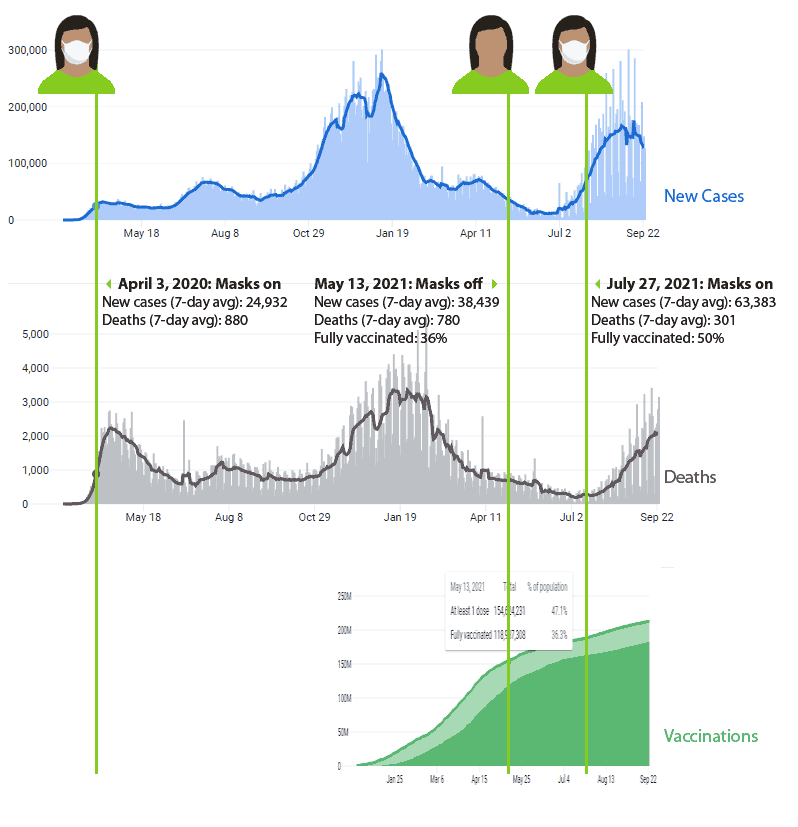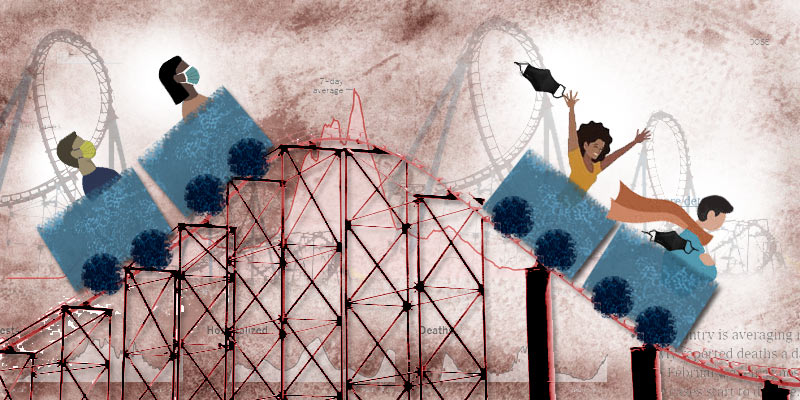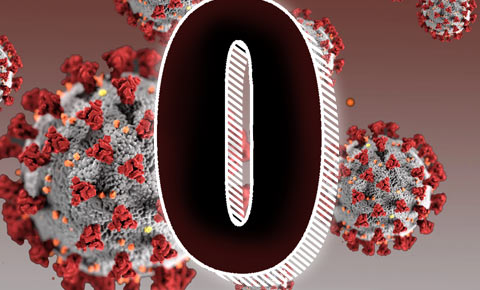"This is a zero-accident workplace."
"Vision zero."
"Our aim: no accidents."
Safety-speak is full of zero-based slogans. We like zero, at least as an aspirational vision, because non-zero statements seem unconscionable. “Our goal is to kill only one or two people this year” does not make a good tagline.
Tragically, COVID-19 has thrust us into a new, decidedly non-zero world. First, we settled for "flattening the curve." Then, "trying to blunt the peak of the curves." After the third, fourth and fifth peaks, we're beginning to accept that we may be in the mountains for a while.
As the pandemic turned many health and safety managers into institutional COVID-19 managers, many wondered if "vision zero" safety principles still apply. If not zero, what number could possibly be acceptable?
No Safety in Numbers
Last March, Dr. Anthony Fauci, chief medical adviser to the president, said the U.S. shouldn’t ease restrictions before the number of new coronavirus cases falls below 10,000 daily. "And maybe even considerably less than that," he added. States and local governments came up with a variety of thresholds and formulas based on cases, deaths, or virus reproduction rates. Ohio Governor Mike DeWine said he would lift public health orders only once the state reached a threshold of 50 new coronavirus cases per 100,000 over a two-week period.
But regardless of the threshold chosen, policy has rarely been consistent with the numbers. When Ohio reached the governor's benchmark in June, he promptly removed mask mandates and other health orders. But when new cases shot up to 77 the following month, he did not reinstate any health orders because, his office said, "there is not the appetite" for such actions. The number is now 616.
As of this writing, daily new cases nationwide are more than 120,000, daily deaths are near 2,000, and hospital intensive care units are at 80% capacity, but only 20% of states have any kind of mask mandate. "We're all over the map," said Monica Gandhi, an infectious disease physician at the University of California, San Francisco, quoted in Nature. "That’s been the problem this entire pandemic. We’ve been making it up as we go along."

On April 3, 2020, when U.S. health officials started saying everyone should wear a mask to prevent the spread of the virus, the daily new case count (7-day rolling average) was nearly 25,000 and rising. But on May 13, 2021, they said fully vaccinated people (36% of the population at that time) could take off their masks even indoors, even though the daily new case count was 13,500 higher than when masks were first recommended. Then, on July 27, 2021, with the highly transmissible Delta variant sending the daily case count past 63,000, the Centers for Disease Control recommended that fully vaccinated people put their masks on again. Data source: New York Times.
Party Like It's 2019 But Don't Let Your Guard Down
As soon as COVID-19 numbers dipped last summer, politicians were eager to re-open the economy, but re-opening was conflated with tossing aside basic preventive health measures like physical distancing and masking. "The part that doesn't make any sense at all is the masking part," Eric Rubin, an infectious diseases specialist at the Harvard T.H. Chan School of Public Health told USA Today in March. "There's no economic reason to not wear masks ever."
Health authorities kept warning people: "We're not out of the woods. Don't let your guard down." But the fact that health and safety measures were widely relaxed and even discouraged tended to jam that message. Actions speak louder than words.
In a move that probably didn't help things, the U.S. Department of Health and Human Services released an ad promoting vaccines called "Party Like It's 2019" which featured young, mask-less people who were clearly not physically distancing. The video was published in June and archived about a month later.
The Health and Safety Roller Coaster
"If our COVID case numbers keep trending down and our vaccination numbers keep going up, we plan to lift our mitigation measures, capacity restrictions and social distancing requirements," Virginia Governor Ralph Northam told a news conference in May. In state after state, leaders made similar statements, explicitly tying their health and safety policy to the ups and downs of incident data.
 The logic of lifting safety protocols as a reward for following safety protocols is obviously flawed, but seductive nonetheless. The same music plays every time a diet fails: “You’ve been good, depriving yourself all week. Now you can reward yourself with a heaping tub of ice cream.” Prudent safety practices need to be consistently taught as a way of life, not as a temporary means to an end. People don't stop covering their sneezes just because cold season is over.
The logic of lifting safety protocols as a reward for following safety protocols is obviously flawed, but seductive nonetheless. The same music plays every time a diet fails: “You’ve been good, depriving yourself all week. Now you can reward yourself with a heaping tub of ice cream.” Prudent safety practices need to be consistently taught as a way of life, not as a temporary means to an end. People don't stop covering their sneezes just because cold season is over.
Rather than practicing safety only until a threshold is reached, here is a time-tested formula:
- What are the hazards?
- What are the worst possible things that could go wrong?
- How will I deal with them?
- What are the prudent practices, protective facilities and personal protective equipment (PPE) necessary to minimize the risk?
These four questions are often referenced in the Laboratory Safety Institute's courses because they are useful as a planning tool for managing any risk, including biological risk from the coronavirus.
These four simple questions stay relevant regardless of statistics. For example, hand-washing and vaccination are prudent practices that help minimize new infections regardless of the rate of community spread. Proper ventilation and air filtration are protective facilities that can reduce airborne pathogens regardless of virus reproduction rates. A properly fitting mask is PPE that minimizes risk whether the current case count is zero or 100,000.

Poster available on our Web store.
The Case for Zero
In an essay published in The Atlantic entitled "Americans Are Losing Sight of the Pandemic Endgame," Céline Gounder, an epidemiologist at New York University, wrote: "The goal isn’t to eliminate SARS-CoV-2 infections. We can’t, no matter how many booster shots the United States gives. The goal is to slow the spread, save lives, and eventually turn COVID-19 into something much less deadly — something more like the flu."
Zero COVID-19 infections may be unrealistic, but last season's flu statistics provide compelling reason not give up on the vision of zero COVID-19 deaths. Flu deaths dropped dramatically compared to the year before because, epidemiologists say, public health measures taken to keep the coronavirus from spreading — notably mask wearing and physical distancing — also stop the flu.
Even despite all the improvised, badly fitting masks, uncovered noses, violations of the 6-foot perimeter, and hands washed for less than 30 seconds, overall deaths from the flu dropped from tens of thousands to hundreds, and pediatric flu deaths dropped from 200 to 1.
That’s still not zero, but it's the closest we've ever seen.

